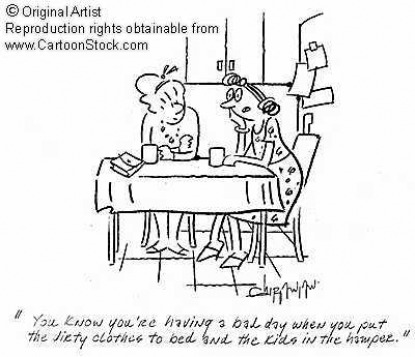Gender Stratification In The Home
Now, some of you may be wondering how you may be experiencing gender stratification in the home. It will be easier to understand once you read what I have to say. You simply need to think about the amount of work each partner in the house may do, if you are living with someone of the opposite gender. You will see the unequal distribution of wealth and power. In a very interesting book that I read for my Women’s Studies Course, I found out that women hold the primary work load around the house. “In 1994, 73 percent of men and women polled said taking care of the kids was the woman’s primary responsibility, along with the cooking (80 percent), the grocery shopping (79 percent), the laundry (80 percent), the housecleaning (76 percent), and the dishes (73 percent). Of all the household chores, men took primary responsibility for only one: deciding how the money would be spent (55 percent)” (Crittenden 26). A later survey was done on this and two-thirds of men actually believed that they share childrearing duties equally with their wives and this ideology doesn't match up with women's assessment and research data. This is because of the difference in childrearing and household ideas. Men believe a good way to take care of something is to choose fast food cooking and they also believe that a little mess isn't bad. Women sometimes get sick of reminding them to do their jobs then and take on the load themselves (Rhode 55). This is where we see the gender stratification at the home. We can clearly see the unequal distribution of power and wealth in these situations, and this poll was done on people like us. “It is most often Mom who drops everything and runs if a child has an accident. Working mothers are more likely than working fathers to take time off to care for a sick child, resulting in far higher absentee rates. During an average week in 1989, full-time working mothers who were married and had a child under age six had more than double the average rate of absenteeism. Married fathers with preschoolers were well below the average” (Crittenden 25). We learned in this book that there are even more unequal distributions of power than this. We see mothers as the primary homemakers. Our society has accepted this mentality for most of our young nation’s years. That is the affects of a patriarchal society. The results are gender stratification and it is passed down through our generations. Think about what habits you are showing your siblings, loved ones, children, family when you are doing a gender specific household jobs constantly. What kind of examples are you setting for people? You can discuss your ideas on this in the Express Yourself section.
To continue on the gender stratification in the home, we also see mothers doing more of the errands and being the most supporting. "Mothers, working or not, go to more teacher conferences, attend more school meetings, and volunteer at school events more often than fathers" (Crittenden 25-26). This isn't just the stay at home moms. This encompasses all mothers. Fathers should have no excuse, but we still see gender stratification at its best here. Only by realizing this problem, can we hope for change. This is what is so special about this site, that I am able to raise awareness in people.

